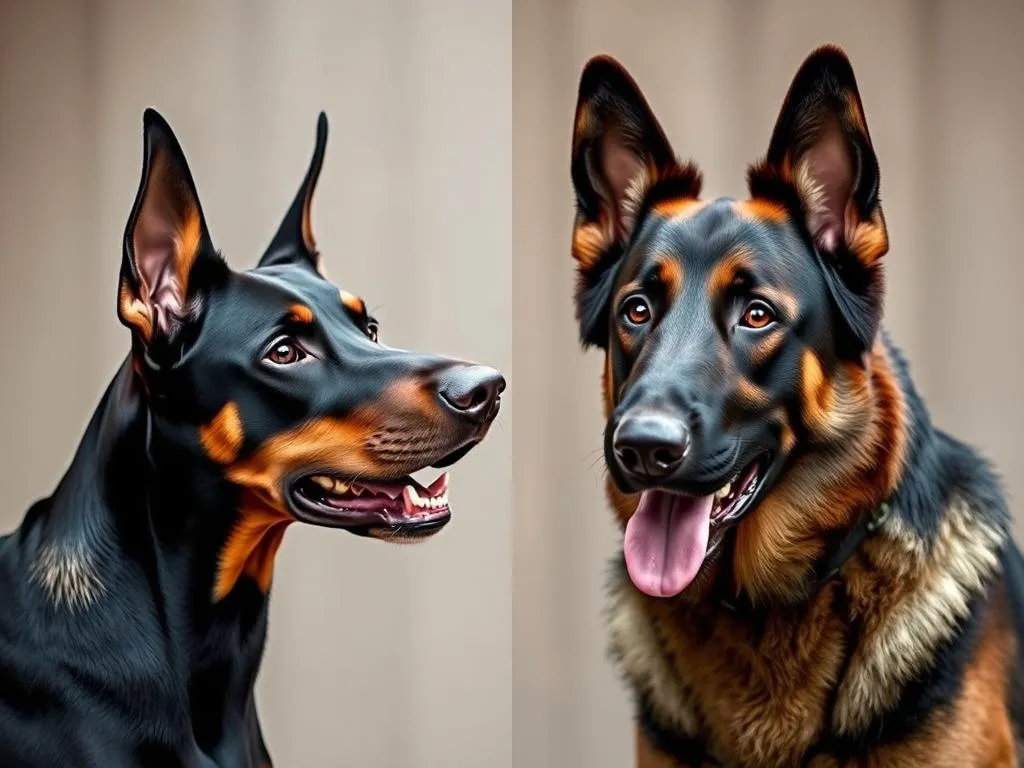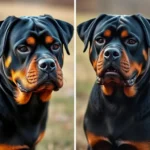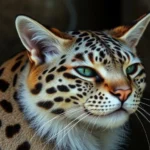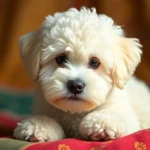
Introduction
Both the Doberman Pinscher and the German Shepherd are among the most popular dog breeds worldwide, each boasting a unique set of qualities that make them beloved by dog enthusiasts. Understanding these breeds, including their similarities and differences, is crucial for anyone considering a new canine companion. In this article, we will explore the historical backgrounds, physical characteristics, temperaments, training needs, health considerations, exercise requirements, grooming, and costs associated with owning a Doberman or a German Shepherd.
Historical Background
Doberman Pinscher
The Doberman Pinscher was developed in the late 19th century by a German tax collector named Karl Friedrich Louis Dobermann. He aimed to create a loyal and protective dog to accompany him on his rounds, leading to the breed’s strong guarding instincts. Over the years, the Doberman’s versatility has allowed it to be used in various roles, including police work, search and rescue, and as therapy dogs. Key historical milestones include their recognition by the American Kennel Club (AKC) in 1908 and their use in military roles during both World Wars.
German Shepherd
The German Shepherd was officially developed in the late 19th century, primarily by Max von Stephanitz, who sought to create an ideal herding dog. The breed was recognized for its intelligence, strength, and versatility, quickly becoming popular in various roles, including police, military, and service dogs. Significant contributions to the breed’s legacy include its use during World War I and II, where they served as messenger and rescue dogs. The breed was recognized by the AKC in 1908 as well.
Physical Characteristics
Doberman Pinscher
Size and Weight: Dobermans are medium to large-sized dogs, generally weighing between 60 to 100 pounds and standing 24 to 28 inches tall at the shoulder.
Coat Type and Color Variations: They have a short, smooth coat that comes in various colors, including black, red, blue, and fawn, often paired with rust markings.
Distinctive Features: Dobermans have a sleek, athletic build with a long neck, deep chest, and a wedge-shaped head. Their ears are often cropped, giving them a distinctive appearance, while their tails are frequently docked.
German Shepherd
Size and Weight: German Shepherds are also medium to large-sized dogs, typically weighing between 50 to 90 pounds and standing 22 to 26 inches tall at the shoulder.
Coat Type and Color Variations: They have a dense double coat that can be straight or wavy, coming in various colors, including black and tan, sable, and all-black.
Distinctive Features: German Shepherds are known for their strong, muscular bodies, large ears that stand erect, and bushy tails. Their overall appearance conveys strength and intelligence.
Temperament and Behavior
Doberman Pinscher
General Temperament Traits: Dobermans are known for their intelligence, loyalty, and protective instincts. They are often described as affectionate with their families while being cautious around strangers.
Common Behavioral Issues: If not properly trained and socialized, Dobermans can exhibit aggression or become overly protective, making early training crucial.
German Shepherd
General Temperament Traits: German Shepherds are intelligent, loyal, and versatile. They are known for their strong work ethic and are often eager to please their owners.
Common Behavioral Issues: Without proper training, German Shepherds can develop separation anxiety or become overly territorial, necessitating early socialization.
Comparison of Temperament
Both breeds share common traits, such as loyalty and intelligence, making them excellent companions. However, Dobermans may be more prone to protective behavior, while German Shepherds often exhibit a stronger desire to please their owners. Both breeds can thrive in family settings but require proper training and socialization to ensure they adapt well to their environments.
Training and Socialization
Doberman Pinscher
Recommended Training Methods: Positive reinforcement techniques work best for Dobermans. They respond well to consistent commands and enjoy engaging activities.
Importance of Early Socialization: Early exposure to various people, environments, and experiences is essential to prevent overprotectiveness and ensure a well-rounded temperament.
German Shepherd
Recommended Training Methods: Similar to Dobermans, German Shepherds thrive on positive reinforcement. They are highly trainable and excel in obedience training.
Importance of Early Socialization: Early socialization is crucial for German Shepherds to develop a balanced temperament and reduce the likelihood of behavioral issues.
Comparison of Training Needs
Both breeds require consistent training and early socialization. However, German Shepherds may be slightly easier to train due to their desire to please their owners. Dobermans, while intelligent, can sometimes display a more independent streak, which may require additional patience during training.
Health and Lifespan
Doberman Pinscher
Common Health Issues: Dobermans are prone to health concerns such as Dilated Cardiomyopathy (a heart condition), hip dysplasia, and certain cancers.
Average Lifespan: The average lifespan of a Doberman is around 10 to 12 years, although some can live longer with proper care.
German Shepherd
Common Health Issues: German Shepherds frequently face health issues such as hip dysplasia, degenerative myelopathy, and various genetic disorders.
Average Lifespan: German Shepherds typically live between 9 to 13 years, depending on their health and care.
Comparison of Health Concerns
Both breeds have distinct health risks that potential owners should be aware of. Regular veterinary check-ups, a balanced diet, and responsible breeding practices can help mitigate many of these health issues.
Exercise and Activity Needs
Doberman Pinscher
Recommended Exercise Routines: Dobermans are high-energy dogs that require daily exercise, including walks, runs, and playtime. They thrive in active households.
Mental Stimulation Needs: Engaging mental activities like puzzle toys, obedience training, and agility courses are essential to keep a Doberman mentally stimulated.
German Shepherd
Recommended Exercise Routines: German Shepherds also require ample exercise, enjoying long walks, runs, and interactive play. They excel in activities like herding and obedience competitions.
Mental Stimulation Needs: German Shepherds benefit from training sessions, agility courses, and interactive toys to keep their minds sharp.
Comparison of Activity Requirements
Both breeds have high energy levels and require significant exercise and mental stimulation. However, Dobermans may need a bit more structured activity due to their protective instincts, while German Shepherds may excel in tasks that challenge their intelligence.
Grooming and Maintenance
Doberman Pinscher
Grooming Requirements: Dobermans have low grooming needs due to their short coat. Regular brushing helps minimize shedding, and they require occasional baths.
Special Considerations: Skin care is essential, as Dobermans can be prone to skin irritations. Regular inspection of their ears and nails is also important.
German Shepherd
Grooming Requirements: German Shepherds require regular brushing, especially during shedding seasons. They benefit from occasional baths to keep their coat clean.
Special Considerations: Ear care and dental hygiene are vital for German Shepherds, as they can be prone to ear infections and dental issues.
Comparison of Grooming Needs
In terms of grooming, Dobermans are lower maintenance compared to German Shepherds, who may require more frequent brushing and care due to their dense double coat.
Cost of Ownership
Initial Costs
Purchase Price: The initial purchase price for a Doberman typically ranges from $1,500 to $2,500, while German Shepherds can range from $500 to $3,000, depending on the breeder.
Initial Setup: Both breeds require essential items like food, bedding, and toys, which can amount to $200 to $500 initially.
Ongoing Costs
Food, Grooming, Veterinary Care: Monthly costs for food can range from $50 to $100, while grooming and veterinary care can add another $50 to $150 per month.
Comparison of Overall Costs
Overall, both breeds can be a significant financial commitment, with Dobermans generally being more expensive upfront. However, ongoing costs will largely depend on the individual dog’s health and care needs.
Conclusion
In summary, choosing between a Doberman Pinscher and a German Shepherd involves considering various factors, including historical background, physical characteristics, temperament, and care requirements. Both breeds can make excellent companions, but their differences may align better with different lifestyles and preferences. Ultimately, prospective owners should assess their living situation, activity level, and personal preferences when deciding which breed suits them best.
FAQs
What is the difference in size between a Doberman and a German Shepherd?
Dobermans are generally taller and heavier than German Shepherds, with Dobermans weighing between 60 to 100 pounds and standing 24 to 28 inches tall, while German Shepherds weigh 50 to 90 pounds and stand 22 to 26 inches tall.
Are Dobermans or German Shepherds better guard dogs?
Both breeds are excellent guard dogs, but Dobermans tend to be more protective, while German Shepherds are known for their loyalty and versatility.
How much exercise do these breeds need?
Both breeds require a significant amount of exercise, typically needing at least 1 to 2 hours of physical activity daily, along with mental stimulation.
Do Dobermans or German Shepherds shed more?
German Shepherds shed more due to their double coat, especially during seasonal changes, while Dobermans have lower shedding due to their short coat.
What is the lifespan of a Doberman vs. a German Shepherd?
Dobermans typically live about 10 to 12 years, whereas German Shepherds have an average lifespan of 9 to 13 years.









